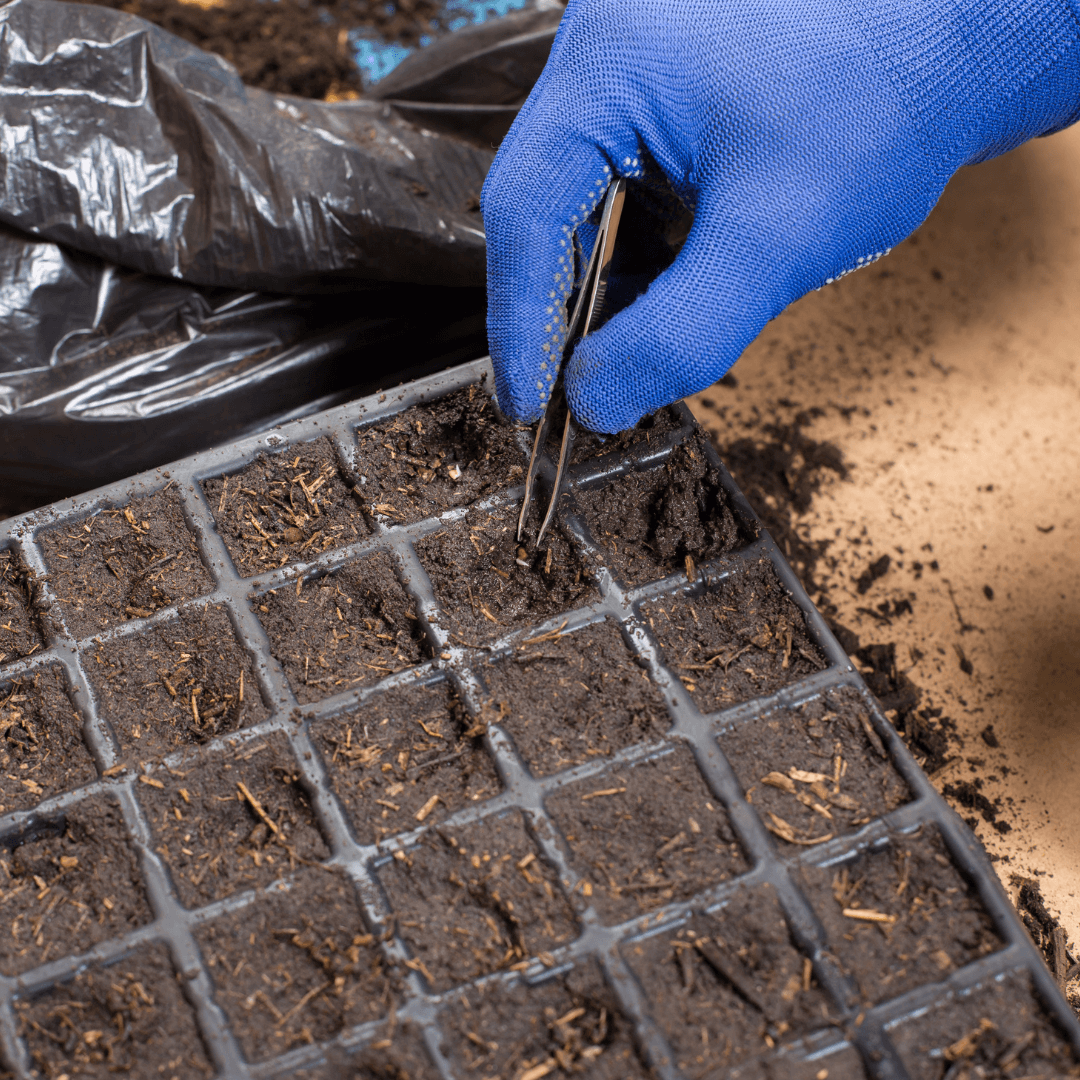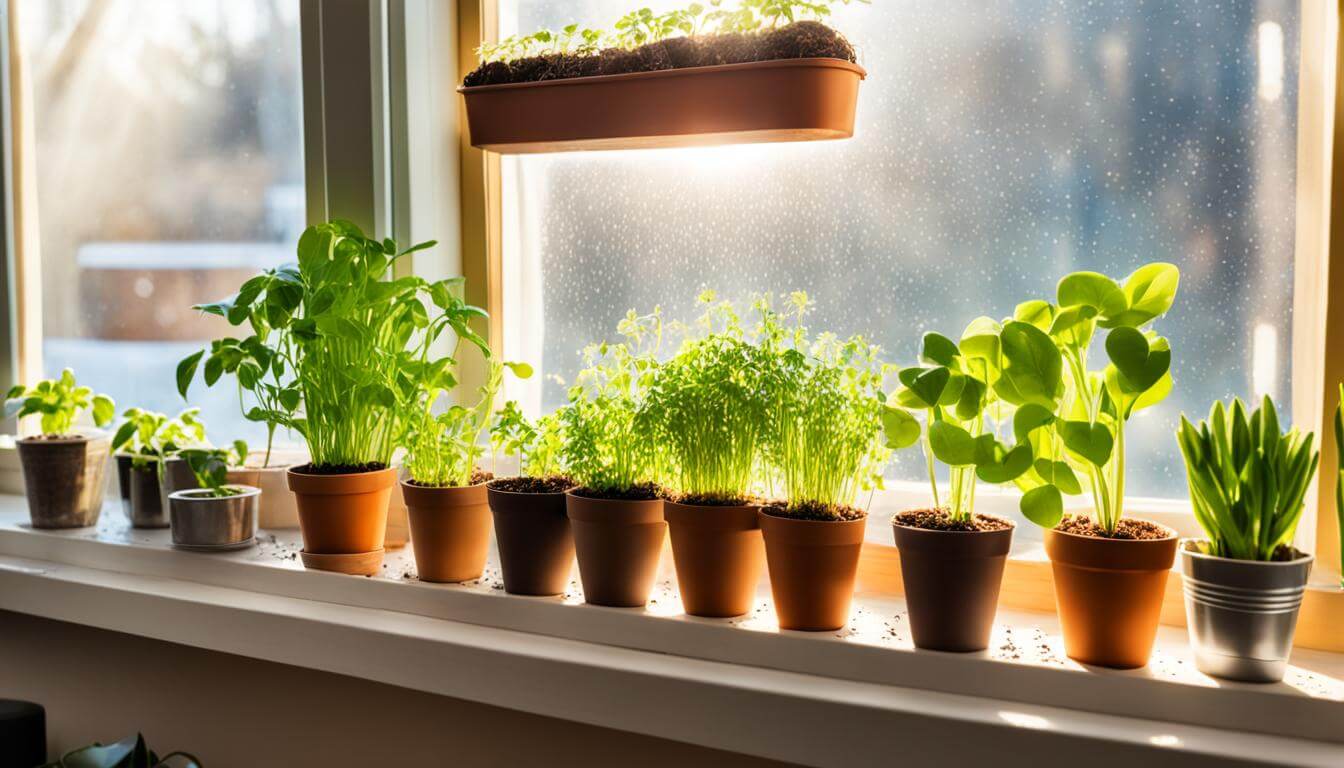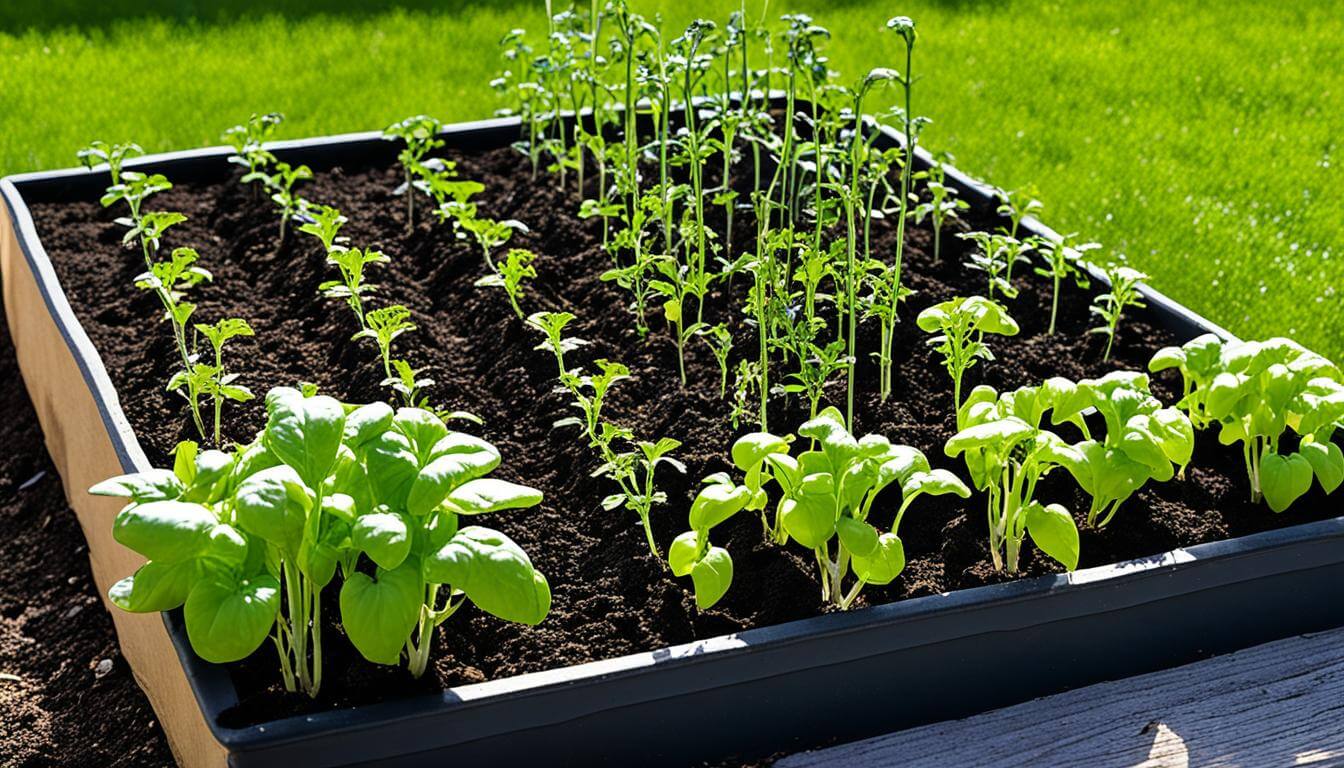The Dreaded Seedling Killer
As a gardener, there's nothing more heartbreaking than watching your precious seedlings succumb to the dreaded "damping off" disease. What is damping off in seedlings? Damping off is a fungal disease that attacks seedlings (mainly those grown indoors or in greenhouses) and can quickly wipe out entire trays of plants. It's a common problem for gardeners and farmers alike, but it can be incredibly frustrating for those just gardening.
What is Damping Off in Seedlings?
After your gardening seeds are started indoors, this is generally when damping off will occur. If you've ever started seeds and then they all suddenly die, make sure to keep reading to
Damping off refers to the sudden collapse of young seedlings due to fungal infection. The fungus typically attacks the stem at or below the soil line, causing it to become waterlogged and soft.
As a result, the stem loses its ability to support the plant, causing it to wilt and eventually die. This can happen at any stage of plant growth, from germination all the way up to transplanting.
Several different types of fungi can cause damping off in seedlings, including Pythium spp., Rhizoctonia solani, Fusarium spp., and Phytophthora spp. These fungi thrive in warm, moist conditions–making indoor seed starting an ideal environment for them to grow.
The Importance of Understanding Damping Off
Understanding damping off is essential for anyone who wants to successfully grow plants from seeds. Whether you're starting seeds indoors or outdoors, damping off can be a severe problem if you're unprepared.
By knowing what causes damping off and how to prevent it, you'll be able to take steps ahead of time that will help ensure your plants stay healthy and strong. One important thing to note is that once your seedlings have already been infected with damping off, there's not much you can do other than remove them from the growing area and start over.
This is why it's so important to take preventative measures to avoid the disease in the first place. The following section will examine what causes damping off and how to protect your seedlings from this devastating disease.
Vegetable Seed Vault Kit | 35 Variety Pack
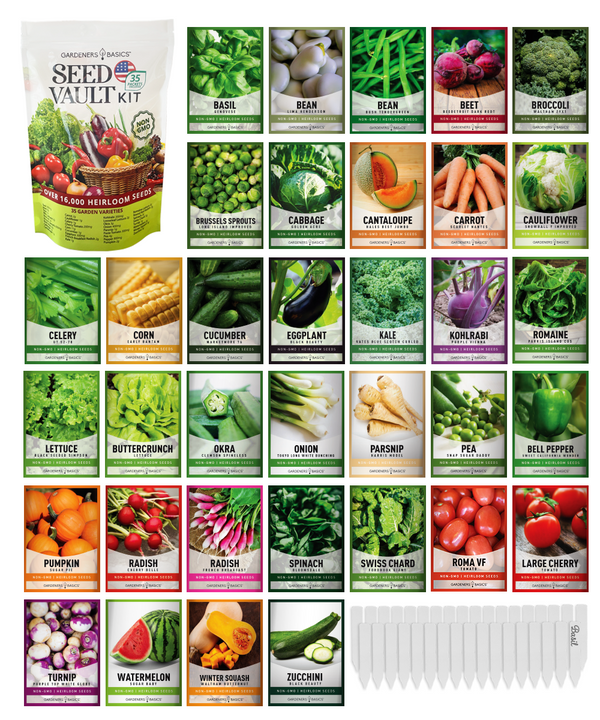
$29.95
$49.95
Ultimate Survival Seed Vault: 16,000+ Non-GMO Heirloom Vegetable Seeds for Emergency Preparedness Introducing the Seed Vault Kit, your all-in-one solution for emergency preparedness and sustainable gardening. This premium seed kit contains over 16,000 non-GMO, Heirloom, Non-Hybrid, and Open Pollinated seeds,… read more
What Causes Damping Off?
Damping off is a fungal disease that affects young seedlings, causing them to wilt and collapse. The disease is caused by several different types of fungi, including Pythium, Rhizoctonia, Fusarium, and Phytophthora.
These fungi are soilborne pathogens that can survive in the soil for years. They are most active in warm, humid conditions, making it essential to prevent and control their growth.
Fungal Pathogens Responsible for Causing Damping Off
Pythium is one of the most common fungal pathogens responsible for causing damping off. It thrives in wet soils and can cause seedlings to rot before they have a chance to grow. Rhizoctonia is another common fungal pathogen that causes damping off by attacking the seedling stem at or near the soil line.
Fusarium attacks both the roots and stems of seedlings, leading to wilting and stunted growth. Phytophthora is another soilborne pathogen that can cause damping off in wet soils.
Factors That Contribute to the Growth and Spread of Fungal Pathogens
Several factors can contribute to the growth and spread of fungal pathogens responsible for damping off in seedlings. One such factor is overwatering or watering too frequently. This creates an ideal environment for fungal growth as it increases soil moisture levels beyond optimal levels.
Another factor that contributes heavily to fungal growth is poor air circulation around plants due to overcrowding or stagnant air conditions - humidity leads this list since many fungi species thrive on high moisture content. Soil pH levels also play a role; when pH levels within soil become too acidic or alkaline, it creates an imbalanced environment unsuitable for plant growth; many fungi species tend towards either more acidic or alkaline environments.
Infected seeds or cuttings can spread fungal pathogens from plant to plant. Store-bought soil often contains many contaminants that can cause soilborne disease if not sterilized or treated correctly.
Understanding the factors contributing to the growth and spread of fungal pathogens responsible for damping off is essential in preventing and managing this disease in young seedlings. By following proper watering practices, ensuring good air circulation, monitoring pH levels, and using sterilized soil and clean tools, gardeners can help prevent the spread of damping off in their plants.
Symptoms of Damping Off in Seedlings
Damping off is a fungal disease that affects seedlings, causing them to wilt and die. The disease is caused by various species of fungi and can attack seedlings at any growth stage. In this section, we will examine the visual signs of damping off in seedlings and how to identify the different stages of the disease.
Visual Signs of Damping Off in Seedlings
A wilting or drooping appearance is the first symptom of damping off in seedlings. As the disease progresses, the affected plants may turn yellow or brown and eventually die.
Sometimes, you may notice a white or grayish mold growing on the soil surface around your seedlings. This is a sure sign that your seedlings are suffering from damping off.
Another visual sign of damping off in seedlings is stunted growth. If your seedlings are not growing as quickly as they should be or seem smaller than other plants of the same age, it could be a sign that they are being affected by this fungal disease.
How to Identify the Different Stages of Damping Off
There are two main stages of damping off: pre-emergence damping off and post-emergence damping off. Pre-emergence damping occurs when seeds fail to germinate due to fungal infection before they emerge from the soil. You may notice that your seeds have rotted away or have not germinated.
Post-emergence damping off occurs after your seedlings have emerged from the soil. Symptoms include wilting and yellowing leaves as well as root rot.
It's important to note that there are different types of fungi responsible for each stage of damping off. For example, pre-emergence damping-off is typically caused by Pythium spp., while post-emergence damping-off is often caused by Rhizoctonia spp.
Wildflower, Perennial, & Annual Flower Seed Kit | 35 Variety Pack
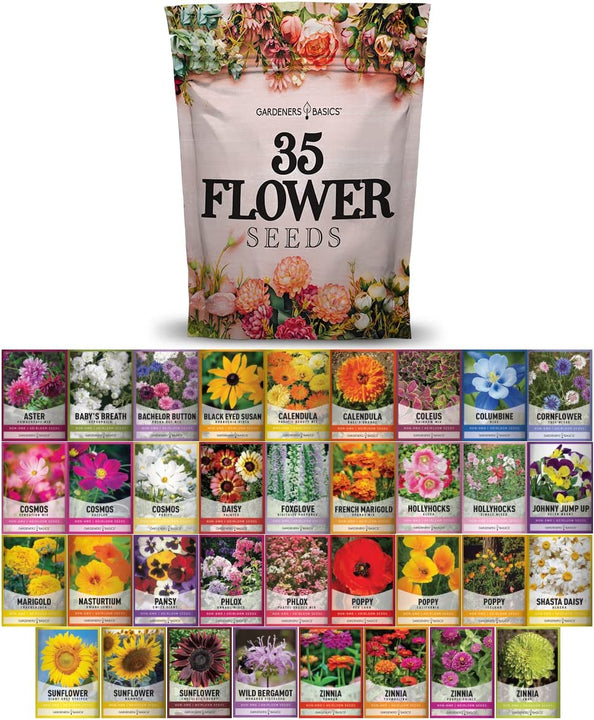
$29.95
$49.95
35 Flower Seeds Variety Pack – Heirloom, Non-Hybrid, Non-GMO, Open-Pollinated – Perfect for Pollinator-Friendly Gardens Transform your garden with our 35 Flower Seeds Variety Pack, offering a stunning and diverse selection of heirloom, non-hybrid, and non-GMO seeds. Each variety in… read more
Taking Action Against Damping Off
If you notice any of the visual symptoms described above, it's important to take action immediately to prevent the spread of the disease. First, remove any affected seedlings and dispose of them in a sealed bag. Next, sterilize any tools or equipment that came into contact with the infected plants.
Make sure to improve drainage and airflow around your remaining seedlings. Damping off can be a severe issue for seedlings in their early stages of growth.
Identifying the visual signs and different stages associated with this fungal disease is essential to prevent further spreading. Taking action quickly can save your healthy plants from becoming infected as well.
Prevention and Control Measures for Damping Off
Precautionary Measures to Avoid Damping-Off
Damping-off is a significant problem that can affect seedlings and prevent them from growing into healthy plants. To avoid damping off, taking some precautionary measures when starting your seeds is essential. Firstly, always use clean seed trays and pots.
Disinfect the containers with a 10% bleach solution before planting any seeds. Ensure the soil you use is free of disease-causing pathogens and pests.
Secondly, avoid overwatering your seedlings, as this can lead to waterlogging of the soil, which creates a favorable environment for fungal growth. Another precautionary measure is ensuring that your seedlings are well-spaced in their containers.
Overcrowding leads to poor air circulation around the plants, which increases humidity levels making ideal conditions for fungal growth. Additionally, always use good-quality potting soil that has been sterilized or pasteurized before use.
Chemical and Non-chemical Control Options for Managing Fungal Pathogens
If you have already detected signs of damping off in your seedlings, several chemical control options are available to manage the spread of fungal pathogens. One chemical option is using fungicides.
These chemicals help control and prevent fungal diseases by killing or preventing the growth of fungi in plants. However, only use fungicides that are labeled safe for seedlings and follow the instructions as provided on their label.
Non-chemical control options include cultural practices such as crop rotation or changing watering methods used previously. This helps interrupt fungi's lifecycle by eliminating their breeding sites or reducing optimal environmental conditions for their growth.
Another effective non-chemical control option is biological agents such as Trichoderma harzianum or Bacillus subtilis; these bacterial organisms compete with pathogenic fungi causing damping off for nutrients and reducing the rate of fungal growth. Prevention is always better than cure.
Taking simple precautionary measures and using non-chemical control options can reduce the risk of damping off in your seedlings and promote healthy plant growth. However, chemical control options may be necessary if you experience any signs of damping off despite preventative measures.
Popular Herb Seeds for Planting | 35 Variety Pack
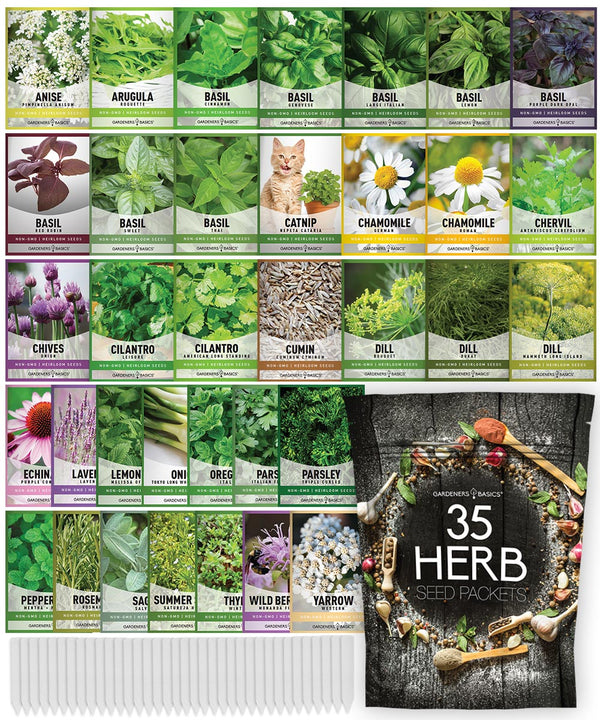
$29.95
$49.95
Heirloom, non-GMO herb seeds for indoor and outdoor home gardens! Introducing our 35 Herb Seeds Variety Pack, the ultimate selection for any herb garden enthusiast! This premium assortment includes heirloom herb seeds that are non-hybrid, open-pollinated, and non-GMO, ensuring you get only… read more
Conclusion
Recap on the Importance of Understanding and Preventing Damping-off in Seedlings
Damping off in seedlings can be detrimental to the start of a garden or crop. The fungal pathogens responsible for damping off can quickly spread and damage entire rows of seedlings, which can be time-consuming and frustrating.
However, understanding what causes damping off, identifying its symptoms, and taking preventative measures to stop it from occurring in the first place are all key to ensuring healthy seedling growth. Damping off is primarily caused by moisture issues and poor growing conditions that promote fungal growth.
Ensuring proper soil drainage and ventilation while not overwatering seedlings is essential as this provides ideal conditions for fungal pathogens to grow. Additionally, starting with sterilized soil or using a fungicide treatment during planting can help prevent infestations.
Symptoms of damping off include discolored stems or roots, wilting plants, or stunted growth. Early identification of these symptoms is crucial as it allows for prompt control measures before the disease progresses too far.
Prevention measures such as good sanitation practices like cleaning equipment between uses can also minimize the potential for infection. Keeping a close eye on weather conditions such as rainfall may also help identify potential trouble spots where damping-off could occur.
Final Thoughts on How to Maintain Healthy Seedlings
Maintaining healthy seedlings is essential because they are the foundation of your garden or crop yield. Starting with high-quality seeds from reputable sources is a good first step, along with using sterilized soil mixtures free of contaminants that may harm your young plants. Watering properly is also critical; overwatered plants become susceptible to damping-off, while underwatered plants become stressed and susceptible to other plant diseases such as root rot.
Water your plants regularly but be sure not to water too much; ensure the soil is moist but not waterlogged. Providing adequate air ventilation also reduces the potential for fungal growth.
This can be achieved by opening windows or using exhaust fans in enclosed areas. Seedling growth is exciting when you watch tiny seeds grow into flourishing plants.
Although damping off can be a major setback, a proper understanding of its causes and symptoms and taking preventative measures such as good sanitation practices and optimal growing conditions will help reduce the risk of infestation. Healthy seedlings will lead to healthy plants and bountiful harvests in due time!
 FAQ: What is Damping Off in Seedlings
FAQ: What is Damping Off in Seedlings
1. What is damping off?
Damping off is a common horticultural problem that affects young seedlings. It is caused by various soilborne fungi, such as Pythium, Rhizoctonia, and Fusarium species. These pathogens attack seedlings, causing their stems to weaken and collapse, eventually leading to the death of the plant.
2. How can I identify damping off in my seedlings?
Symptoms of damping off include water-soaked spots on the stem near the soil line, thinning and collapsing stems, and a general decline in growth and vigor. Affected seedlings may also appear stunted, wilted, or develop mold on their surfaces.
3. What conditions favor damping off?
Damping off is likely in high humidity, poor air circulation, and wet, cool soils. Overwatering, overcrowding, and using contaminated soil or tools can also increase the risk of damping off.
4. How can I prevent damping off?
Prevention is key when it comes to damping off. Start by using clean, well-draining soil and sanitized containers. Water your seedlings properly, avoiding overwatering and allowing the soil surface to dry between waterings. Ensure good air circulation around your seedlings and avoid overcrowding. Finally, consider using a fungicide or biological control agent to protect your seedlings from fungal pathogens.
5. Can I save seedlings affected by damping off?
Once a seedling is severely affected by damping off, it is unlikely to recover. Removing and discarding affected seedlings immediately is essential to prevent the pathogen's spread to healthy seedlings. If caught early, you can apply a fungicide or biological control agent to help prevent further infection.
6. Are certain types of plants more susceptible to damping off than others?
Damping off can affect many plant species, but some are more susceptible. Vegetables like tomatoes, peppers, cucumbers, and lettuce are known to be more prone to damping off. Additionally, seedlings grown in cool, damp conditions are generally more susceptible to damping off, regardless of plant type.
7. Can damping off affect seeds before they germinate?
Damping off pathogens can attack seeds before they germinate, resulting in rotting or poor germination rates. To prevent this, use clean, disease-free seeds and store them in a cool, dry place. Some gardeners also use seed treatments, such as fungicides or hot water treatments, to reduce the risk of damping off in seeds.
8. Can damping off be a problem in hydroponic systems?
Although damping off is primarily associated with soil-grown seedlings, it can also occur in hydroponic systems. In hydroponics, damping off is often caused by waterborne pathogens such as Pythium. To prevent damping off in hydroponics, maintain proper water temperature, oxygen levels, and pH, and ensure your system is clean and contamination-free.
9. Are there any organic solutions for preventing or treating damping off?
Yes, there are several organic methods to prevent and treat damping off. You can use well-draining, compost-rich soil to encourage healthy root growth and prevent overly wet conditions. Some gardeners also use beneficial microorganisms, such as Trichoderma species, as a biological control to help suppress damping-off pathogens. Additionally, you can apply organic amendments like cinnamon, chamomile tea, or hydrogen peroxide to the soil to help reduce the risk of infection.
10. How long do damping off pathogens survive in the soil?
Damping off pathogens can survive in the soil for extended periods, ranging from months to years, depending on the species and environmental conditions. They persist in plant debris, soil, or contaminated tools and containers. To minimize the risk of damping off, practice good sanitation and crop rotation, and avoid reusing soil from previous infestations.
11. Can I reuse the soil where damping off has occurred?
Reusing soil where damping off has occurred is not recommended, as the pathogens may still be present and could infect future plantings. If you must reuse the soil, consider solarizing or sterilizing it to kill any remaining pathogens. Solarizing involves covering the soil with a clear plastic tarp and allowing the sun to heat the soil for several weeks while sterilizing involves heating the soil in an oven or microwave to kill pathogens.
12. Do commercial seed-starting mixes help prevent damping off?
Commercial seed-starting mixes are typically formulated to be sterile or low in pathogens, well-draining, and lightweight, which can help reduce the risk of damping off. However, even with these mixes, proper watering, good air circulation, and maintaining clean growing conditions are essential to preventing damping off.



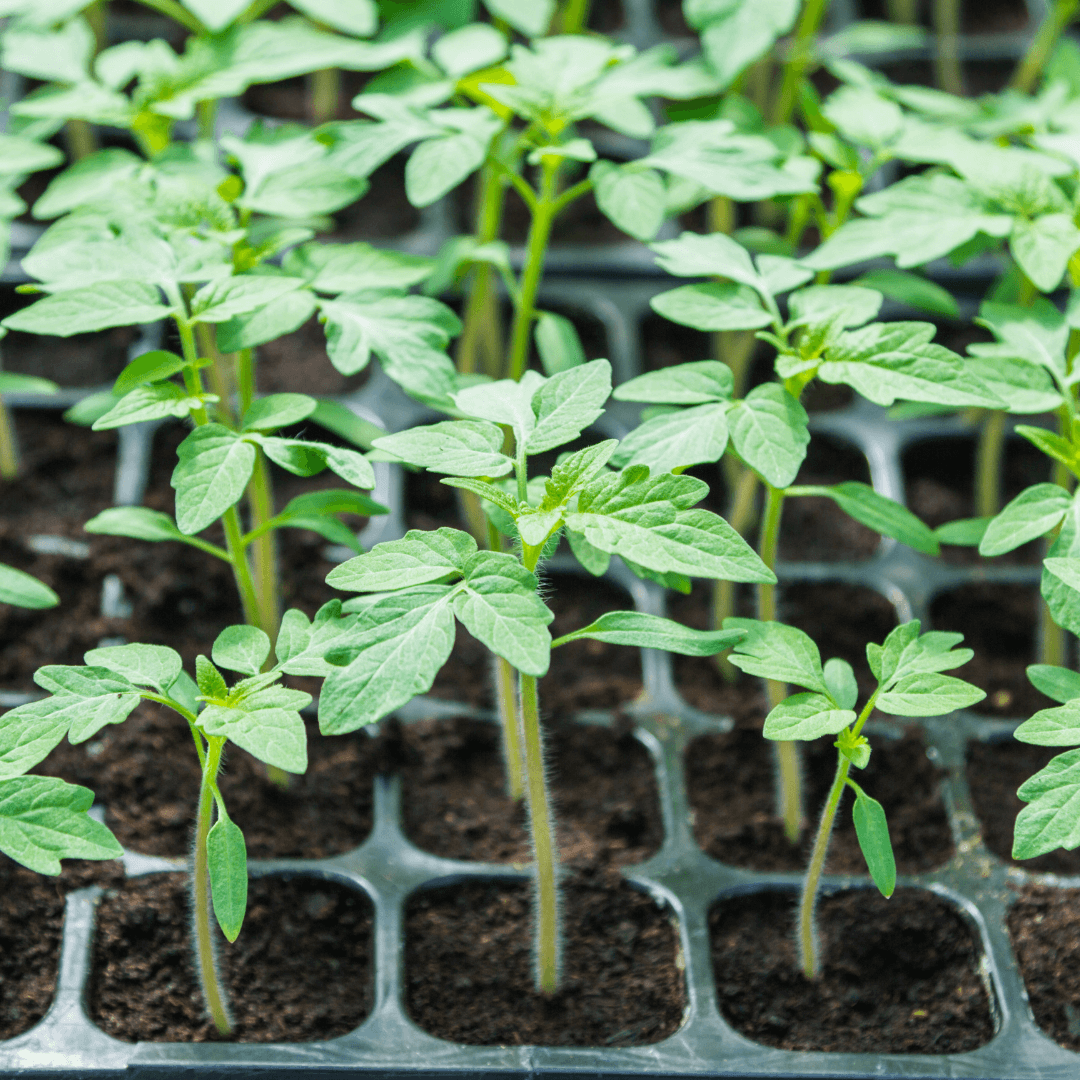

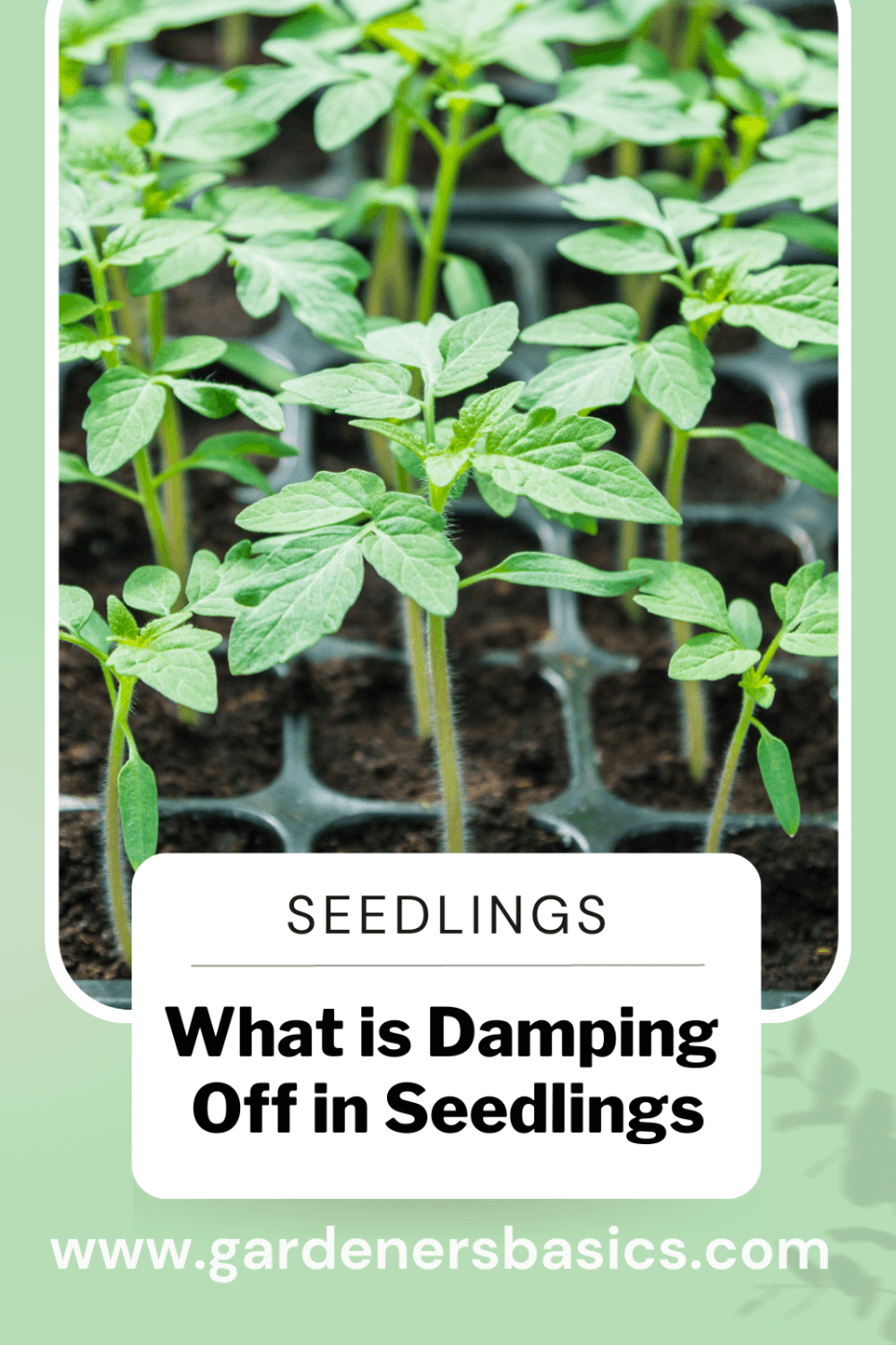 FAQ: What is Damping Off in Seedlings
FAQ: What is Damping Off in Seedlings